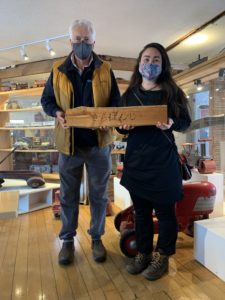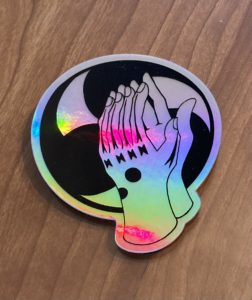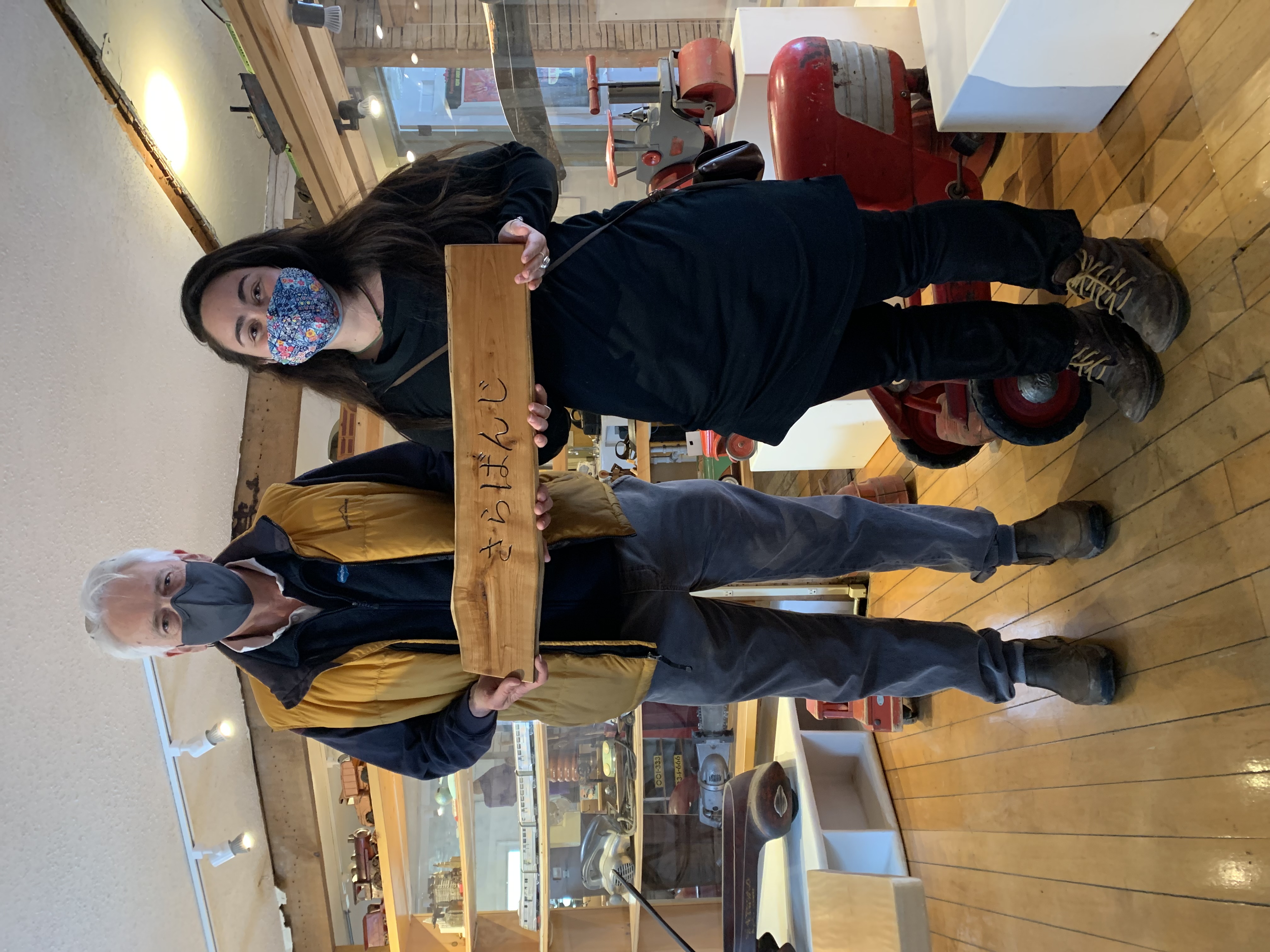An endangered graphic language: Okinawan hand tattoos
Back at my desk, so to speak, after four weeks of fundraising, the first order of business is to bring to your attention a very unusual but significant form of graphic language, both highly endangered and a great illustration of the intimate relationship between graphic systems and their culture of origin: Okinawan women’s hand-tattoos. 
The issue was brought to my notice by Mariko Middleton, for whom I did a carving of the word sarabanji, meaning “golden age” or “the best of times,” in Uchinaaguchi, one of the languages of the Ryukyuan people (now known as Okinawa).
Mariko has embarked on a course of rediscovering and relearning her Okinawan heritage, one product of which is her podcast.
In conversation, she recommended I check out a blog post by Alexis Miyake (from which I’m going to quote) about the fascinating tradition of tattooing practiced by women of the islands.
“When Okinawa was under the rule of the Ryukyu monarchy,” she wrote, “Uchinanchu (Okinawan) women wore indigo tattoos known as hajichi on the backs of their hands. These tattoos functioned as symbols of the transition from adolescence to womanhood and also as indicators of social status.
“In tattoos of the lower classes, commonly used icons included arrowheads, circles, and squares. According to historians, the arrowhead represented daughters never coming back to their families once they married into another house, just as arrowheads never return to their origin. The circle represented winding thread and the square represented a sewing box; these two items were important because back then, a girl could not marry if she didn’t know how to sew.
“Uchinanchu women who came from higher-class families had more intricate, ornate tattoos that sometimes went all the way up their arms. Little is known about these upper-class tattoos, as documentation in English is scant. No matter their status, all Uchinanchu women were said to value their hajichi over their wealth, their husbands, and life itself, as the tattoos were thought to ward off evil, ensure safety, and bring happiness.”
These tattoos are a perfect example of forms of graphic communication that fall outside the Western definition of writing as an abstract set of phonetic symbols, yet are clearly rich, complex and extraordinarily important, and make use of available indigenous materials.
Unfortunately, they are also an example of the way in which a new dominating culture fears and tries to eradicate the meaning-symbols of cultures they want to control or suppress.
“When Japan took control of the Ryukyu Kingdom in the late 19th century, the practice of tattooing was banned. The reasons were multifold. Tattoos were looked down upon by Japanese society; at the same time, Japanese authorities wished to strengthen their own influence by reducing the influence held by village head priestesses. According to ancient Ryukyuan beliefs, women ruled the spiritual domain and were believed to possess innate spiritual powers; they were called onarigami while men were called umiki—the rulers of the secular domain. Hajichi functioned as signifiers and transmitters of female power.”
The stigma was so consistently reinforced that “Eventually, the hajichi became a symbol of shame; in some photos of Uchinanchu women, their hands are held palms up or tucked into their sleeves in order to hide the hajichi on the backs of their hands.”
According to Alexis Miyake, there is no the beginning of a renaissance in the use of hajichi, and Mariko gave me an advocacy sticker. (See photo.)
I would love to hear from anyone who can give me any information on the subject.
Thanks!
Tim
This post is sponsored by our friends at Typotheque, Rosetta, and Solidarity of Unbridled Labour.





March 6, 2022 @ 3:18 pm
Ippee nifee deebiru (thank you very much), Tim, for your beautiful project to bring awareness to these endangered languages! Grateful for the calling of attention to Ryukyu / Loochoo / Okinawa as well as the hajichi. What is particularly interesting is the variation of the word ‘Hajichi’ across the different islands. Please check out this instagram post of the many different ways the people of the Ryukyu islands referred to these beautiful, indigenous hand tattoos: https://www.instagram.com/p/CT-J8eGlF_m/
If you’d like to follow along the podcast page, our website is: https://www.shimanchupodcast.com/
Yutasurugutu unigeesabira!